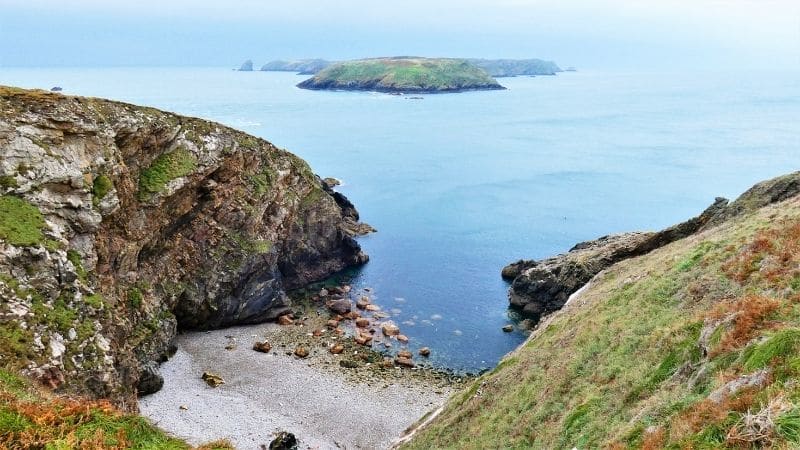In the British Islands, two species of a seal can most often be observed: common seal and grey seal. The island’s coast is inhabited by about 38% of the total population of grey seal and about 5% of the common seal’s total population.
Also, with a little luck and know-how, you can enjoy watching these beautiful marine mammals.
We already had one opportunity to observe these animals on the south coast of Wales near Worms Head.
This time we went to Pembrokeshire. It wasn’t our main intention to search for seals, at least not on the first day, but when we came across a large colony south of Martin’s Haven our next day, we put the seals under our control! 😊
That was a hit!
Pembrokeshire
September is the month when puppies are born. The breeding season in Great Britain lasts from July to December, while the young are born from September to November, covered with dense, velvety white fur. The newborn weighs about 15 kg and gains weight about one and a half kilograms a day! Puppies shed their white fur; they slowly learn to swim in coves and go to sea after a few weeks.
You can find the largest grey seal colonies throughout the year, particularly on the islands of Skomer and Ramsey near St Davis Head. Puppies appear mainly there. You can go to both islands in the summer by boat (also to watch puffins, manx shearwaters, and three-toed gulls).
2019, believing the inhabitants, seals also feel exceptionally well on the west coast of Pembrokeshire. We reached out at Oriel y Parc Gallery & Visitor Centre, and on the second day, we went on the cliff trail south of St Jasmine. On the 3 km stretch, we observed individual young and larger colonies.
The animals seemed to feel free and safe. Seals usually choose cliffs, hard-to-reach beaches, and caves. We watched them from the top of the cliff equipped with a camera, telescope, and binoculars, but without these devices, you can still see seals very well and listen to what they have to say 😉
Females mainly stay on the beach or swim in coves with young, while males set off a bit further to patrol the sea and protect their harem.
I recommend sitting back comfortably as we want to share with you what we have seen 😊
Where to spot seals in UK?
If you have the opportunity to reach other places, I encourage you to go:
- West Cornish Coast: Mutton Cove Area – A Hidden Cove Near Godrevy Lighthouse, Godrevy Point
- Falmouth Bay in Cornwall: in addition to seals, dolphins and porpoises can also be observed. The main surroundings for watching seals are Black Rock next to Penndenis Point.
- Scotland: the Orkney Islands, most likely inhabited by both grey and common seals. Seals have been breeding since October on most beaches nearby.
- Scotland: in Moray Firth, you can observe both bottlenose seals and dolphins. You can go on an organized trip.
- Norfolk: Blakeney National Nature Reserve, common and grey seal pups can be found on the 3 km stretch of sandy beach from Blakeney Point. Puppies are born from November to December.
- Norfolk: Horsey Gap – seals are found on sandy beaches sheltered by dunes; they can be observed in designated places.
- Northumberland: The Farne Islands are the largest seal colony on the east coast. Annually around a thousand puppies are born here. You can go on an organized boat trip and watch them!
Have you been to one of these places? Share with us!






Recent Comments